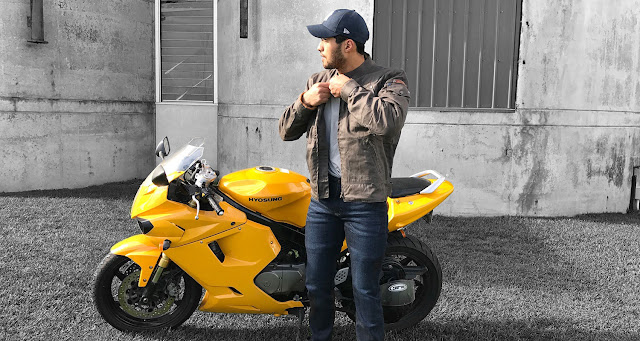Casual Biking with Essential Safety Tips
Some individuals use bicycles as a mode of transportation to get to and from work, school, or running errands. Others use bikes as a form of exercise or to maintain an active, healthy lifestyle. Whether it's a leisurely ride through the park or a more difficult ride on trails or mountain roads, biking can be a fun and enjoyable activity.
Bicycling has health advantages, but it also has advantages for the environment and the economy. With no emissions and the potential to lessen air pollution and traffic congestion, biking is a sustainable and environmentally friendly mode of transportation. Due to the lack of fuel costs, it is frequently a more affordable form of transportation than driving a car.
Overall, riding a bike can be a great way to stay active, have fun, and contribute to a healthier and more sustainable world.
Biking essential safety refers to the measures that are necessary to ensure the safety of a person while riding a bike. These measures are designed to protect the rider from injury and ensure that they can ride safely and comfortably.
Some of the essential safety measures for biking include wearing a helmet, following the rules of the road, staying visible, keeping your bike in good working order, using hand signals, staying alert, and staying sober.
Here are some essential safety tips for casual biking:
Wear a helmet: Wearing a helmet is the most important safety measure you can take when biking. A helmet can protect your head from serious injury in the event of a fall or collision.
Follow the rules of the road: When biking on the road, follow all traffic laws and signals. This includes coming to a full stop at stop signs and red lights, and signaling before turning or changing lanes.
Stay visible: Wear bright, reflective clothing and use lights or reflectors on your bike to make yourself more visible to other road users, especially at night or in low light conditions.
Pads: Pads, such as knee pads, elbow pads, and wrist guards, can help protect the joints and bones from injury in the event of a fall.
Gloves: Gloves can help protect the hands from injury and provide a better grip on the handlebars.Protective clothing: Some bikers may choose to wear protective clothing, such as a chest protector and back protector, to help reduce the risk of injury from falls or collisions.
Keep your bike in good working order: Regularly check your brakes, tires, and other essential components to make sure they are in good working order.
Use hand signals: Use hand signals to indicate to other road users when you are turning or changing lanes. This will help them anticipate your movements and avoid any potential collisions.
Stay alert: Pay attention to your surroundings and be prepared for any potential hazards, such as potholes or debris on the road.
Stay sober: Never ride a bike while under the influence of alcohol or drugs. Not only is it illegal, but it can also seriously impair your ability to ride safely.
Biking is a popular and enjoyable activity that offers numerous benefits. Whether used as a form of transportation, for exercise, or for leisure, biking can be a fun and rewarding experience. However, it is important to prioritize safety when biking, as it can be a potentially dangerous activity if proper precautions are not taken. By following essential safety measures such as wearing a helmet, following the rules of the road, staying visible, keeping your bike in good working order, using hand signals, staying alert, and staying sober, you can ensure a safe and enjoyable biking experience.



Comments
Post a Comment